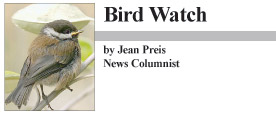Hungering For Spring
The sky is clear blue, the sun is shining, and a brief snow shower this morning left everything looking refreshed, clean and white. It is late February, when  days are suddenly longer and there is warmth in the sunshine, but even though this is one of my favorite times of year I find myself looking forward to spring. Last week when I went grocery shopping, there were big net bags of oranges prominently displayed on a table at the front of the supermarket. I could not resist buying them, and as soon as I got home and unpacked the groceries I sliced open one of the fat juicy oranges, filling my mouth with summer sunshine.
days are suddenly longer and there is warmth in the sunshine, but even though this is one of my favorite times of year I find myself looking forward to spring. Last week when I went grocery shopping, there were big net bags of oranges prominently displayed on a table at the front of the supermarket. I could not resist buying them, and as soon as I got home and unpacked the groceries I sliced open one of the fat juicy oranges, filling my mouth with summer sunshine.
We are about two-thirds of the way from the Winter Solstice to the Spring Equinox, and the change of season these days is noticeable. Maybe it’s because of the dramatic increase in length of daylight, or maybe it’s the sight, smell, and taste of the oranges, but spring is on my mind more and more these days. For the past couple of weeks, the chickadees have been singing deedee, their spring song, and the amorous squirrels on the big limb of the oak tree know spring is not far away. Someone mentioned to me this week that she thinks the goldfinches at her feeder are beginning to show more spring yellow in their feathers. My sister-in-law e-mailed from Florida that the huge flocks of robins we saw there in early January have disappeared, and my niece, who lives in eastern Kansas, tells me that huge flocks of robins have begun to appear in the fields around their house. Although it’s not likely the robins in Kansas are the same individuals we saw in Florida, migrating birds know spring is coming, and they are already on their way north.
Curious about how the migration is progressing, I poked around on the Internet for information. There I discovered that ruby-throated hummingbirds, which spend the winter in Mexico and Central America, and migrate about this time every year across the Gulf of Mexico, have begun to arrive along the Gulf Coast from Texas to Florida. According to the website of the Great Backyard Bird Count, which took place Feb. 18–21, ruby-throated hummingbirds are being seen in Florida, and a few have even been reported as far north as South Carolina and North Carolina. Other neo-tropical migrants are being seen in southern parts of the United States, too, such as rose-breasted grosbeaks, yellow warblers, black-throated blue warblers, black-throated green warblers, and American redstarts. We do not expect to see any of these birds here in inland Maine until some time in May, but the thought that these beautiful creatures are winging their way northward is exciting.
Our driveway is partially encased in ice, well over a foot of snow still covers the yard, and I am not yet ready to give up the pleasure of snowshoeing, but there is no denying that spring is coming. When we wake up in the morning the sky is already light, and when I take my afternoon walk the sun is still high in the sky. Our bird feeder still hosts the usual winter birds, but my thoughts turn to the day when we will slice an orange in half and put the halves outdoors on twigs in the hope of attracting Baltimore orioles. Loons will call through the night. A pine warbler will fly down from the big pine tree to land on the suet feeder, and a yellow warbler exploring the shrubs by the lake will fill up on insects. One day, I will bring the hummingbird feeder up from where it rests in the basement, clean it out, fill it with sugar water, and hang it on the porch. I will sit in the wicker rocker on a balmy spring day, surrounded by potted geraniums and impatiens, and a ruby-throated hummingbird will zoom across the dooryard and land on the feeder to drink. It will happen. I know it will.
Jean Preis resides in Bridgton.

